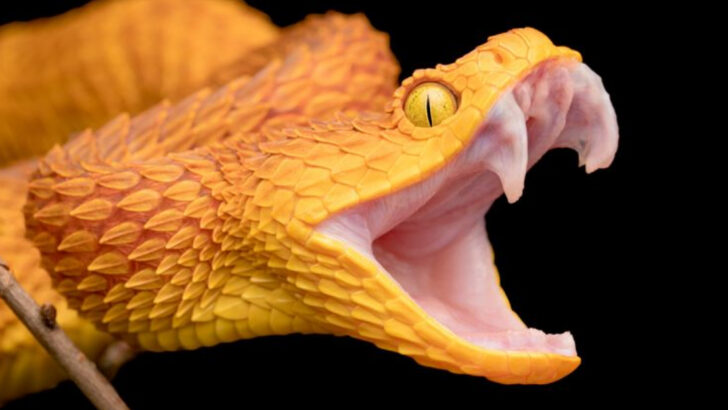One wrong step on a summer trail can turn an afternoon stroll into a wild encounter. Venomous snakes aren’t just hiding in remote jungles—they’re slithering through backyards, parks, and campsites across the country. But here’s the twist: some of the scariest-looking snakes are completely harmless. And a few of the real threats? They look shockingly ordinary. Knowing the difference can mean everything. From head shapes to color patterns, tail rattles to eye slits, nature leaves clues—if you know where to look. And once you learn the signs, spotting a danger noodle becomes more like a game of sharp-eyed survival. Let’s break down 10 simple ways to recognize venomous snakes— and 6 sneaky lookalikes that might fool even the boldest hikers.
Triangular Head
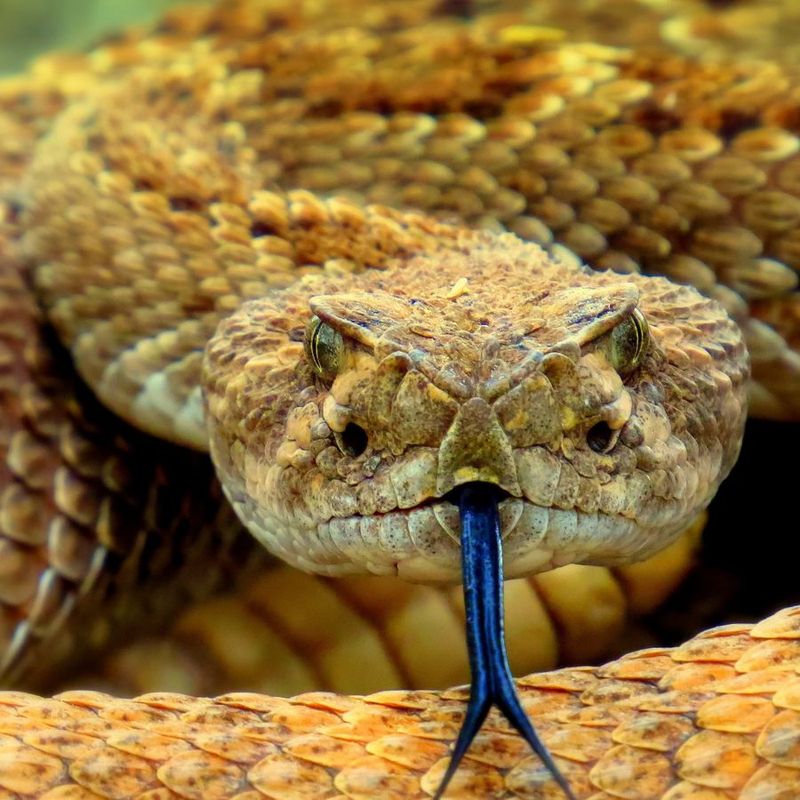
A triangular head can be a dead giveaway for venomous snakes. This shape often results from the presence of venom glands. However, not all snakes with triangular heads are venomous, so caution is advised.
Some non-venomous snakes mimic this feature as a defense mechanism. It’s best to observe other markers before drawing conclusions.
Paying attention to the head shape, along with other features, can be crucial. This method, while useful, should be employed with a discerning eye to avoid misidentification.
Vertical Pupils
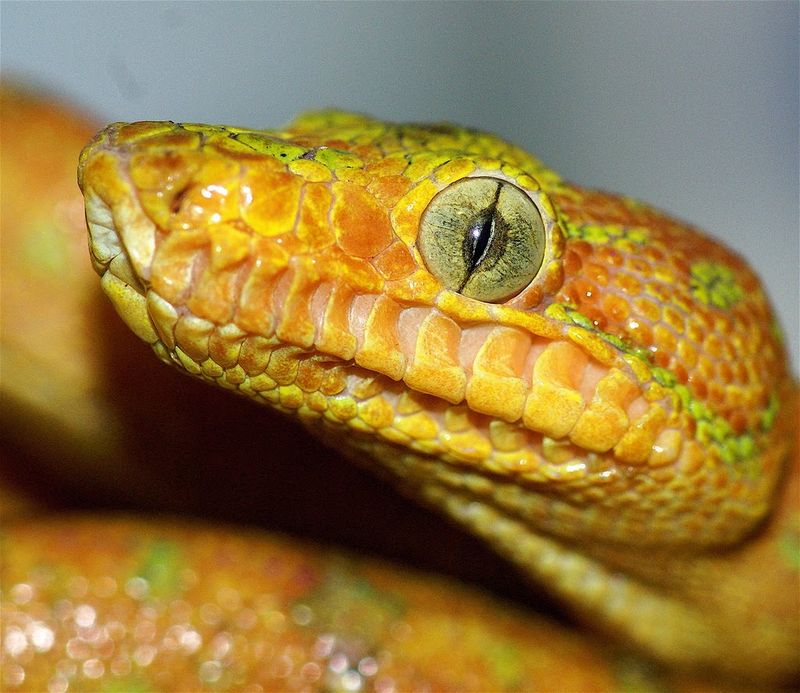
The eyes can reveal a lot, especially when it comes to identifying venomous snakes. Many venomous species possess vertical slit-like pupils, similar to felines.
This adaptation is useful for ambush predators that hunt primarily at night, providing them with better depth perception.
However, some harmless snakes have similar eyes, so it’s essential to consider additional features. Observing the eyes should be part of a comprehensive analysis rather than a standalone test.
Heat-Sensing Pits
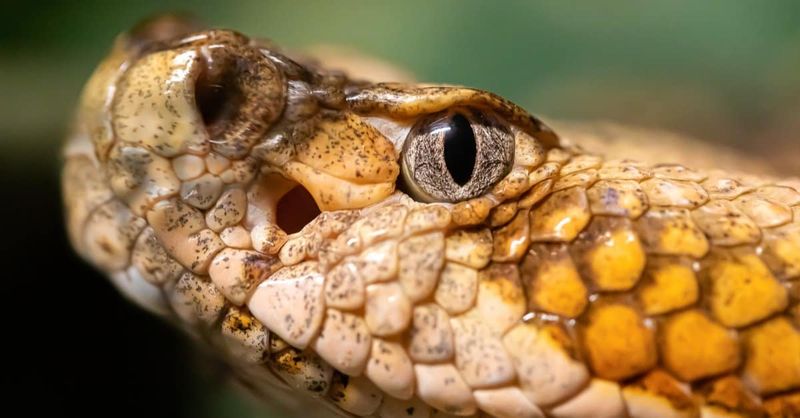
Pit vipers, like rattlesnakes, have heat-sensing pits between their eyes and nostrils, a feature unique to this group. These pits help them detect warm-blooded prey even in darkness.
Such an adaptation gives them a significant hunting advantage, allowing precision strikes.
However, not all venomous snakes have these pits, so it’s not a definitive characteristic. Nevertheless, spotting these pits can be a strong indicator of a venomous snake presence.
Colorful Patterns
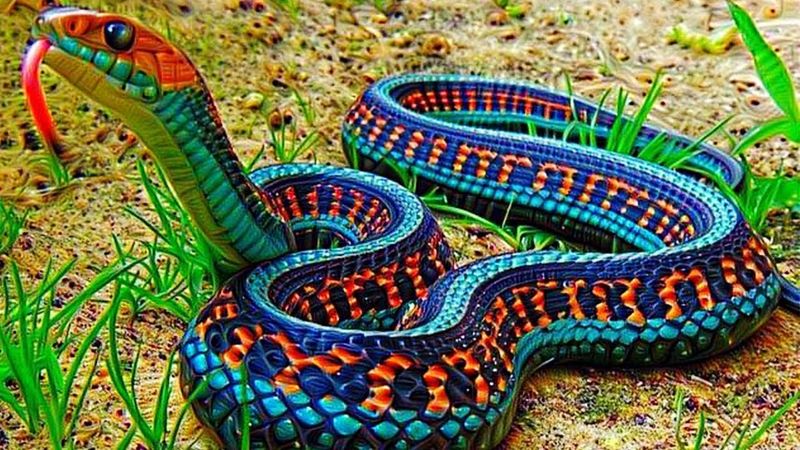
Vibrant colors can often be a warning sign in the animal kingdom. Many venomous snakes boast bright, contrasting patterns to ward off potential threats.
This visual cue serves as a deterrent to predators, suggesting danger.
Nonetheless, mimicry is common, where non-venomous snakes display similar patterns for protection. Observing colors along with other features can help discern their true nature.
Rattling Sound

The unmistakable rattle of a rattlesnake is nature’s warning alarm. This sound is created by the rapid shaking of the snake’s segmented rattle.
Upon feeling threatened, rattlesnakes use this noise to fend off potential threats, giving a clear signal to keep distance.
While effective, not all venomous snakes possess this feature, so relying solely on sound can be misleading.
Large Fangs

Large, visible fangs are often associated with venomous snakes. These fangs are not just for delivering venom but are also specialized for gripping prey.
They can retract when not in use, making them less visible unless the snake is agitated or feeding.
This characteristic, combined with other markers, can help identify venomous snakes accurately. Caution should be taken not to rely only on fang size.
Behavioral Aggression

Venomous snakes often exhibit defensive aggression when threatened. They may hiss, coil tightly, or strike to protect themselves.
This behavior is an indication to maintain a safe distance to avoid confrontation.
Some non-venomous snakes also display similar behavior to deter predators, making it a less reliable marker on its own.
Tail Shape
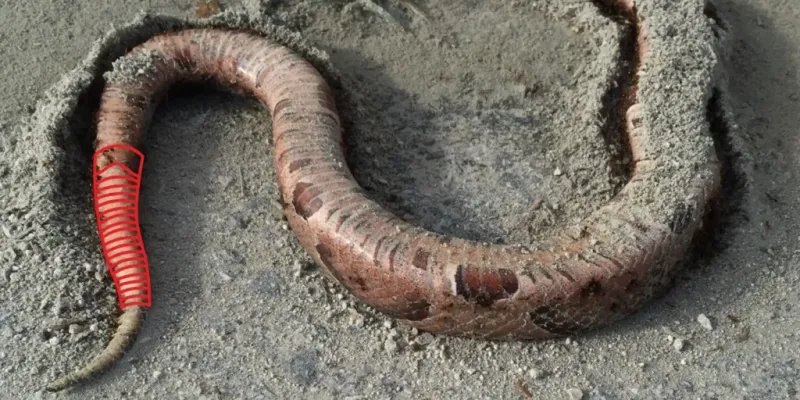
Venomous snakes may have distinctive tail shapes. For instance, the rattlesnake’s tail is known for its signature rattle.
Tail shape can serve as an additional identification tool but should not be the sole determinant.
It’s crucial to combine this observation with other characteristics to draw a reliable conclusion.
Flattened Body
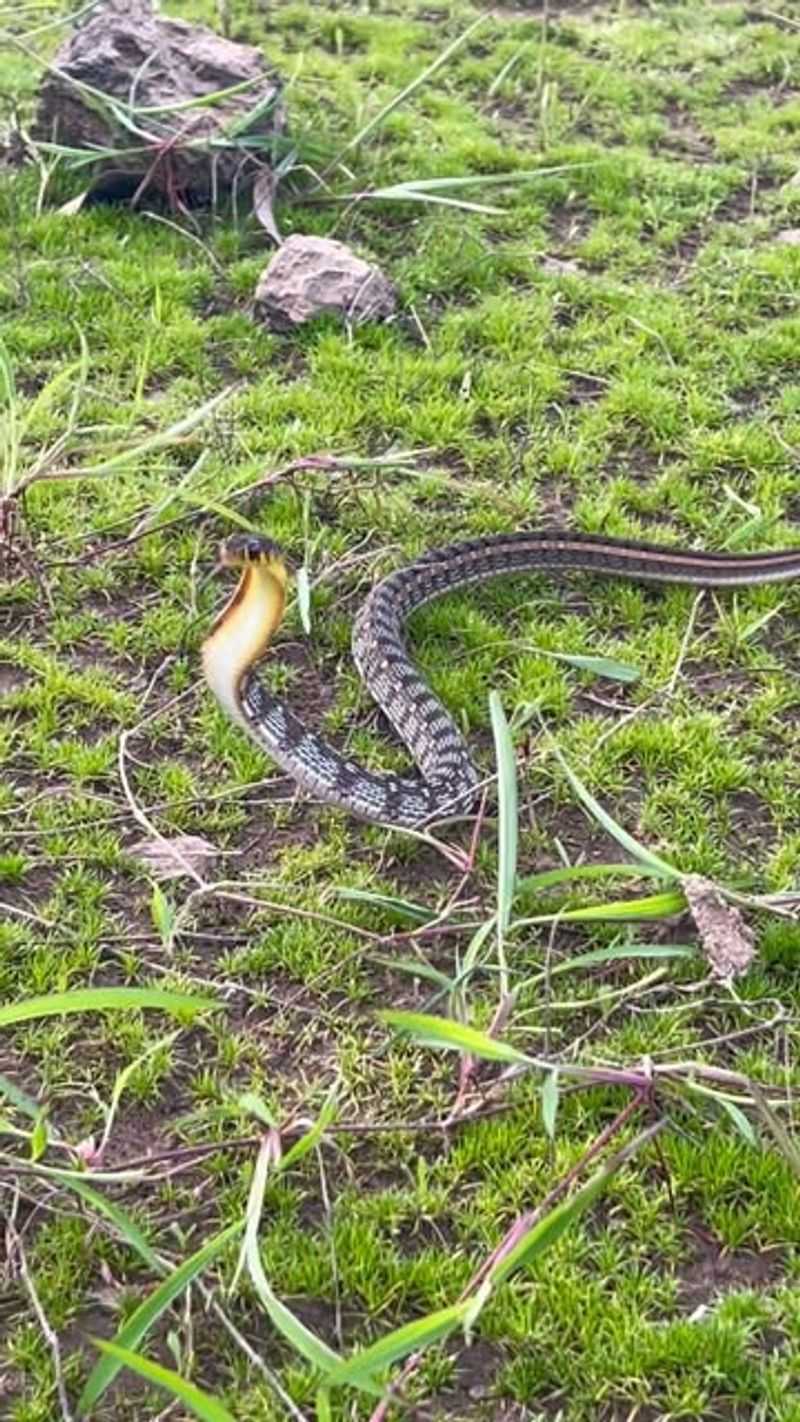
A flattened body can imply a defensive posture in many snakes. When threatened, some venomous snakes might spread their bodies to appear larger.
This visual intimidation tactic is designed to ward off potential threats.
However, it’s not exclusive to venomous species, so use this feature cautiously while identifying snakes.
Head Markings

Unique head markings can sometimes indicate a venomous nature. For example, the copperhead’s head features distinct patterns that blend with their environment.
Such markings can confuse predators, offering them a survival edge.
Identifying head markings alongside other features enhances accuracy in recognizing venomous species.
Milk Snake – Mistaken Identity
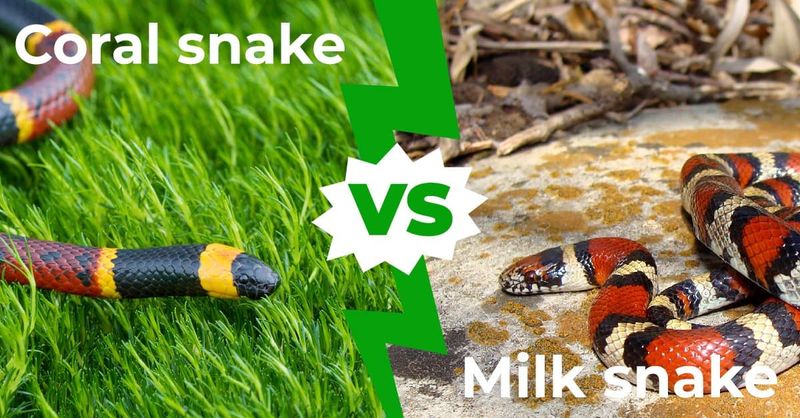
Often mistaken for the venomous coral snake, the milk snake shares similar color bands but is harmless. Its pattern follows the rhyme: ‘Red on black, friend of Jack; red on yellow, kill a fellow.’
This mnemonic helps differentiate between the two.
Milk snakes are non-aggressive and pose no threat to humans, often found in forests or grasslands.
Garter Snake – Common Misunderstanding
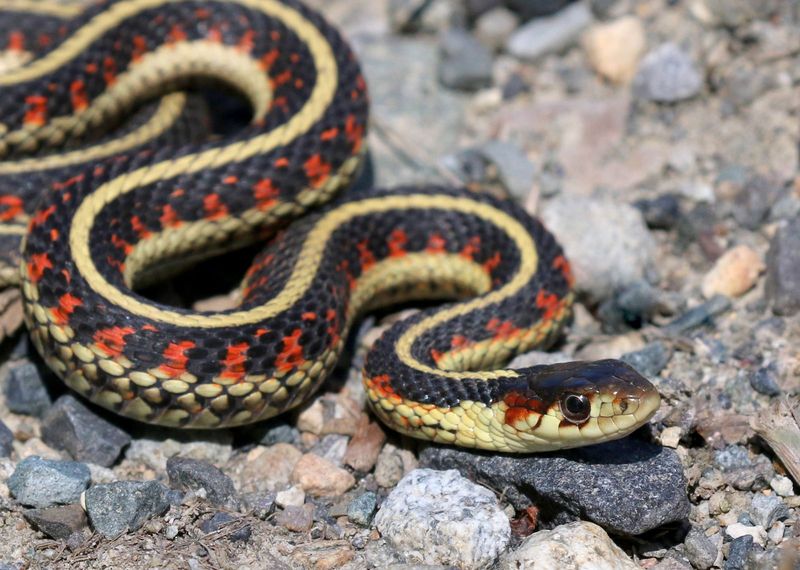
Garter snakes are non-venomous yet frequently mistaken for their venomous cousins due to their widespread presence. They have distinctive longitudinal stripes and are typically harmless to humans.
These snakes are beneficial in gardens, controlling pest populations, and are known for their docility.
Understanding their harmless nature can ease unnecessary fears.
Hognose Snake – Defensive Bluff
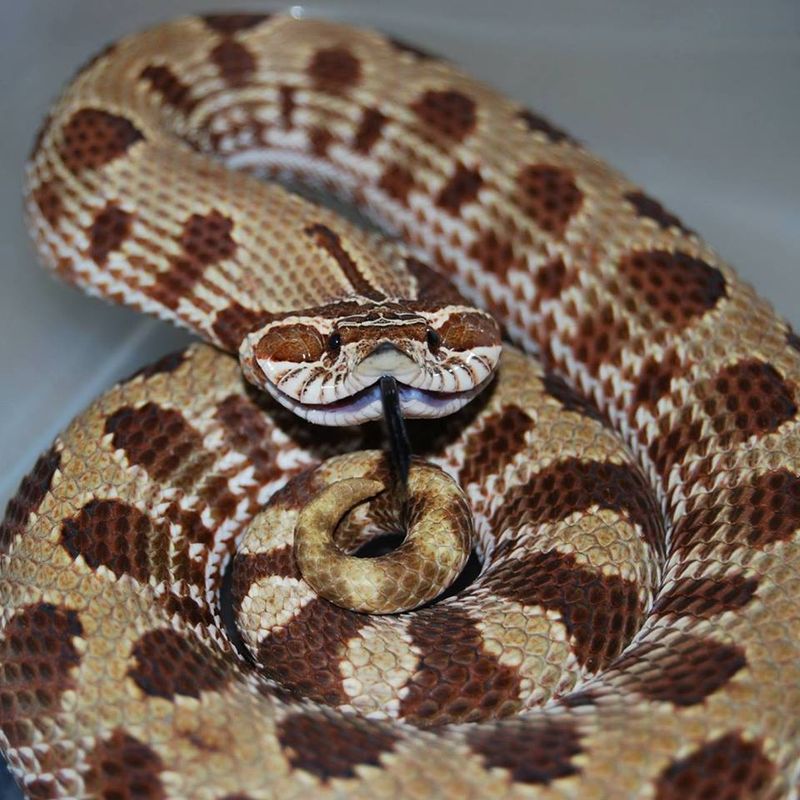
Known for its dramatic behavior, the hognose snake is a harmless species that mimics more dangerous snakes. When threatened, it may flatten its neck like a cobra or play dead.
This bluffing tactic is purely defensive and poses no real threat.
Recognizing these behaviors can help differentiate them from genuinely dangerous species.
Water Snake – Aquatic Mimicry
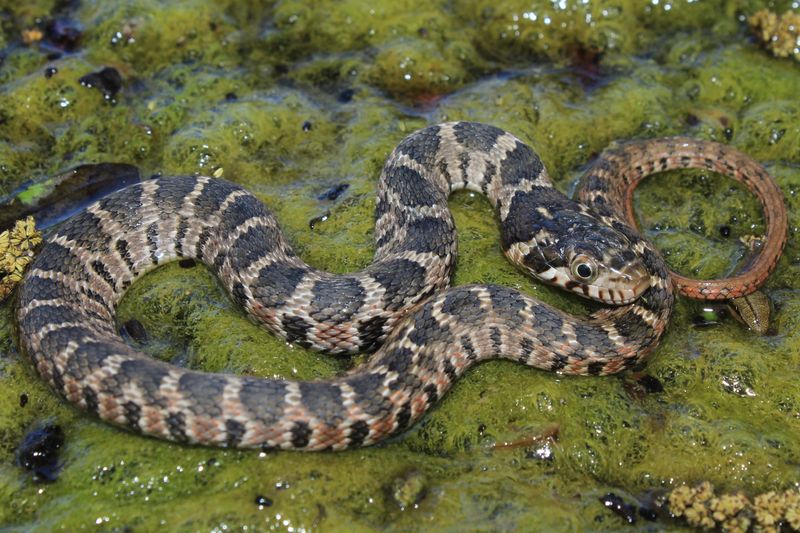
Water snakes are often confused with cottonmouths due to their aquatic habitats and similar appearances. However, water snakes are non-venomous and play a crucial role in controlling aquatic ecosystems.
They can be identified by their more slender bodies and round pupils.
Understanding these differences can prevent unnecessary alarm.
Kingsnake – Colorful Doppelganger
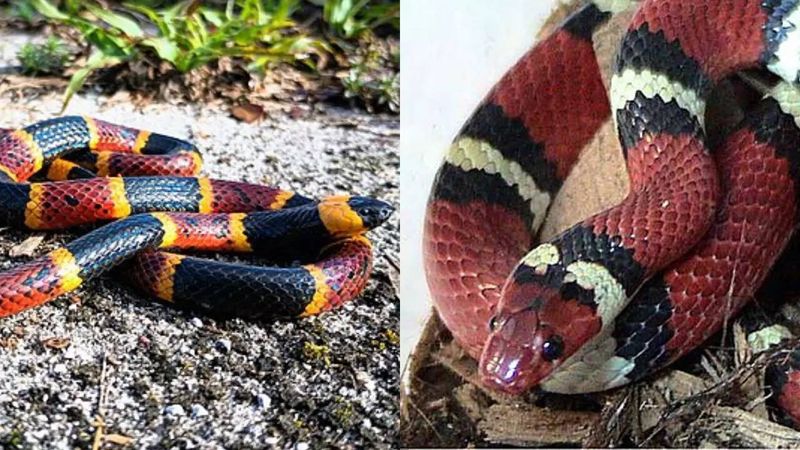
Kingsnakes are often misunderstood due to their striking resemblance to venomous coral snakes. The key difference lies in the band pattern: ‘Red touches black, safe for Jack; red touches yellow, kill a fellow.’
Kingsnakes are non-venomous and even prey on other snakes, including venomous ones.
Their presence in an area can indicate a healthy ecosystem balance.
Rat Snake – Misidentified Climber
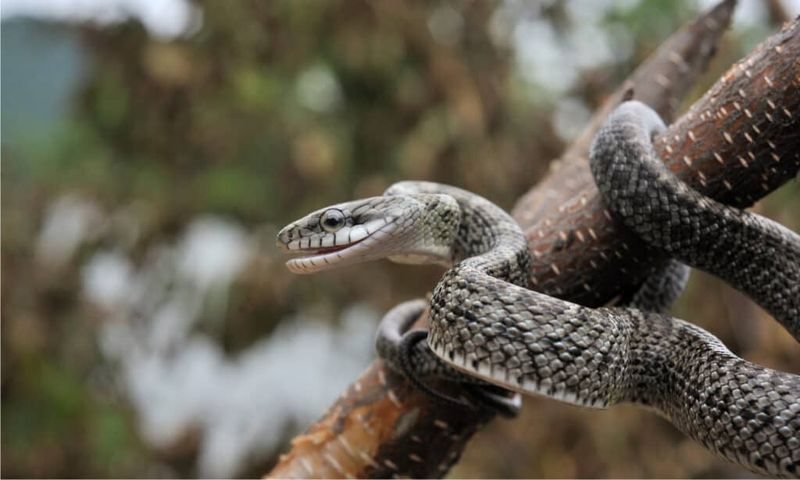
Rat snakes are frequently mistaken for dangerous species due to their size and climbing abilities. They are non-venomous and excel at controlling rodent populations.
Their climbing skill allows them to hunt in trees, which can surprise observers.
Recognizing their harmless nature and beneficial role can alleviate unwarranted concerns.

